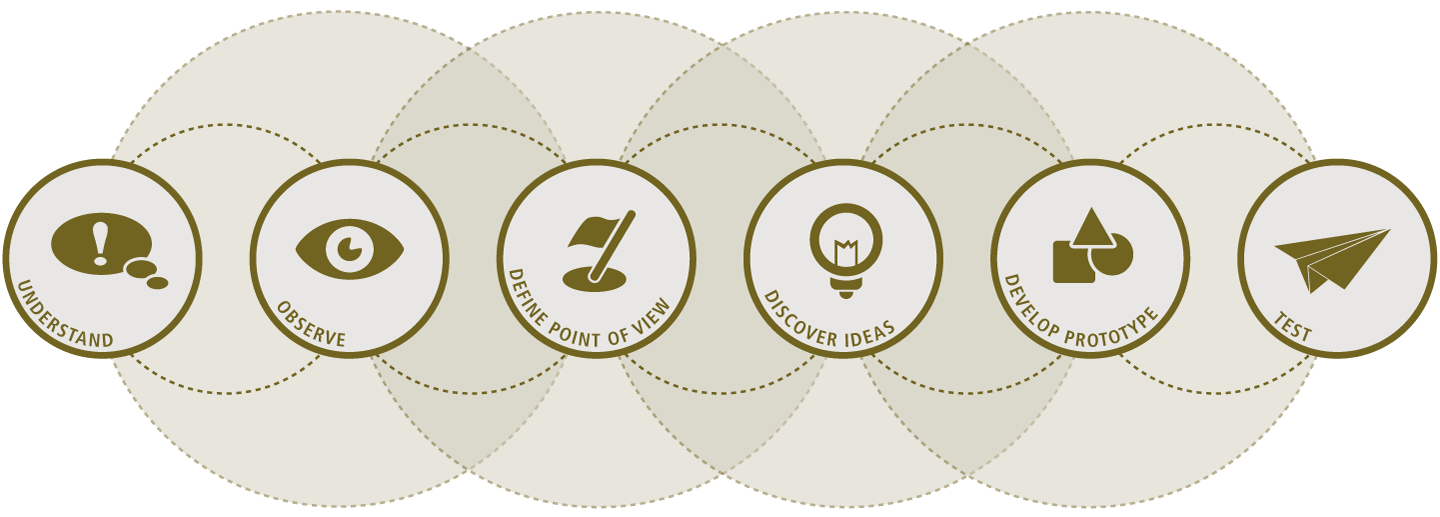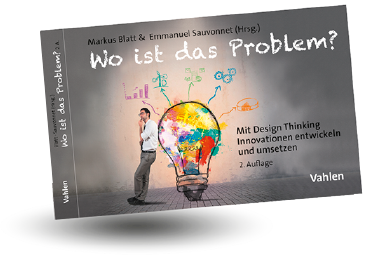
Design thinking is a management tool that combines creative and analytical methods. Its characteristic feature is a six-stage, iterative process flow that is always open-ended. This means that new insights can be integrated at any time. The principle applies that successful innovations can only be created at the interface between people, technology and business. People, whether project participants, customers or consumers, and their specific needs are always the focus of attention.
6 STEPS TO SUCCESS!
The following brief description of the Design Thinking process is based on the findings of the Hasso Plattner Institute (Stanford and Potsdam) and is divided into the action areas of problem analysis and solution finding.
PROBLEM ANALYSIS
- Understanding: As a team, develop a common understanding of the initial situation and then establish a key design challenge!
- Observe: Research the target group through interviews and observation and create a knowledge base!
- Define Point of View: Pick the most important findings from the multitude of information collected, analyze them in a qualified manner and adapt the Design Challenge accordingly!
FINDING SOLUTIONS
- Find ideas: Develop a variety of solution approaches, cluster them afterwards and identify a main idea as a result!
- Develop a prototype: Develop the main idea, for example, in the form of physical objects, role-playing games or videos, and present it in a way that can be experienced!
- Test: Check the prototype together with users for its strengths and weaknesses and collect feedback!
OUR OFFER

With our Design Thinking workshop series, we support you individually in your problem solving In three joint workshop days, we guide you through the phases of Design Thinking based on your needs. In addition, we prepare professional analyses during the observation phase. After completion of the entire process, we provide you with the results of the workshop series and the analyses in a processed form. Through jointly derived next steps, you will know what to do next. With our offer, you will receive directional impulses for your projects in a short time and with little effort.
With us to new solutions – contact us now, we are looking forward to your problems!
OUR TIP! The neueBeratung-Handbook
Detailed information about Design Thinking can be found in our handbook “Wo ist das Problem? Mit Design Thinking Innovationen entwickeln und umsetzen” (VAHLEN).





